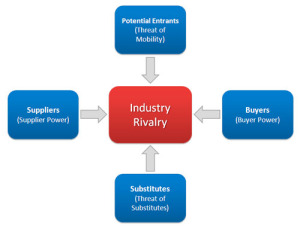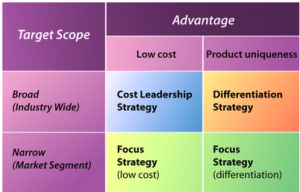Development Strategy for Business Resilience and Sustainability through an Incremental Strategy – A Study of British Telecom
This report discusses the comparative analysis of three strategies namely incremental, renovate and inventive within the context of the internal as well as the external environment of a company such as BT (British Telecommunications Limited) which is a multinational telecommunications services company headquartered in London. It also evaluates a change management programme that can bring about strategic change within this organisation. BT has a global services as well as a retail division. Its operations span 170 countries throughout the world.
Company’s Internal and External Environment and Its Strategy Type
In the current business scenario, intense competition, integration across global markets, changes in technology and the advancement of the telecommunications sector are some of the external factors that influence the change management program of BT. the Company’s managerial talent and the level of the motivation of its workforce are some of the internal factors influencing strategic management. In order to improve the effectiveness of the organisation, strategy is the key because it leverages the capabilities of the individuals and the institution in a cohesive manner. The ideal development strategy for a company like BT that seeks business resilience and sustainability throughout its line of operations is an incremental approach.
Strategic Capabilities
Incremental strategies are effective within the current dynamic environment. Regulatory convergence is a key factor in the selection of incremental strategy for handling change and sustaining profits. The challenges of global competition have to be seen within the broader regulatory framework for effective strategic management. The incremental approach to strategic management is in response to the complex and ever changing corporate environment. Consequently, the strategic process moved in an incremental manner adapting to changes in the internal and external environment of the company. Decisions will then be driven by multiple goals. BT has low levels of business resources with respect to its telecommunications services though it is steadily expanding in the field of broadband communications. BT has reported a fall in sales though it experienced a healthy profit in 2013. Moderate or high business resources imply greater strategic capabilities which enable the company to excel using innovation or denotative strategic management. Annual pre-tax profits of BT were up by more than 40% but sales fell by 4%.
Business Strategy BT Competitive Analysis
The major feature of the incremental strategy is that it is decentralised and it responds to dynamic environmental challenges. BT is facing a changing socioeconomic milieu wherein the incremental approach accounts for this variable. An incremental strategy enables the organisation to fulfil its mission by closing the divide between long as well as short term goals within a changing environment. Organisational design followed a contingency approach since landmark research was conducted by Emery and Trist (1965) as well as Lawrence and Lorsch (1967). When a company faces a challenging environment, incremental strategy is far better than inventive or renovate strategies on account of the challenging environment faced by the company. As a British MNC which has to face global competition, BT should opt for an incremental strategy to boost its prospects and sales. The degree to which the environment of a company is globalised also influences its development strategy. Porter has proposed the five force model for analyses of competition presented below:

Figure 1: Porter’s 5 Force Model from Michael Porter, “Competitive Strategies”
Porter’s model elucidates how competition from different sources can create industry rivalry. Competitive analyses in the context of an incremental strategy is suitable for organisations such as BT which want to cope with competition from different sources, as discussed in Porter’s model.
Business Strategy BT Competitive Advantage
BT needs to consider the complete gamut of competitors through an incremental approach to change management. Porter (1980) has argued that organisations should consider the behaviour of firms that are producing same/similar products as well as the action of suppliers, competitors producing substitute products and the customers themselves. An incremental strategy enables companies such as BT to develop a holistic view of the market to promote business resilience and boost profits. Competitive advantage has been discussed through a model proposed by Porter discussed below:

Figure 2: Porter’s Generic Strategies Model (Porter, 1980)
Ansoff (1985) has discussed how companies should also develop the strategy keeping in mind the flow of critical resources for production. They should also consider how they will impact non-market actors. Nonmarket actors or strategic interest groups also have an important role to play in influencing the development strategy of a firm. BT should follow a cost leadership strategy for low cost rather than aiming for product uniqueness as there are many rivals offering advanced services in this sector.
Culture
The culture of an organisation also plays a key role in influencing the strategy it adopts. The company’s abilities revolve around the resource, skills and procedures as well as its competencies. Attitudes and other cognitive factors reflect an organisation’s culture. The work culture at BT is unique. It focuses on completion of projects and garnering of crucial contracts. The organisational culture of a company influences its success in current times. BT needs to follow an incremental strategy whereby it adapts to changing global and domestic environment so that it can keep up with its competitors. The choice of a strategic management approach is based on several critical considerations such as an organisation’s strategic capabilities, competitive analyses, competitive advantage and culture.
An organisation must have a strategy that can meet the challenges of its internal or external environment (Ashby, 1961). Therefore, an incremental strategy would be ideal for enhancing the sustainability of business practices and the resilience of British Telecom. Consider the personnel, structure, systems and financial resources to be important factors in any strategy for change management. An incremental strategy follows a contingency approach which is ideal for British Telecom.
The organisation’s culture as reflected by collective values, experiences and beliefs of its members also has a critical role to play in its success. An incremental strategy for development and change management incorporates this effectively, making it the viable and effective choice for BT which has skilled employees. An incremental strategy is ideal for bringing about small but important changes in the organisational functioning compared to inventive or renovate strategies which focus on large scale change.
In order to possess business resilience and sustainability in its operations, BT needs to follow an incremental strategy to bolster its current organisational culture. Companies need to be proactive to cope with changes such as economic slowdowns, increased global competition and massive amount of technological advancement. BT would do well to adopt an incremental, contingency oriented approach to strategic management to cope with this.
Critical Evaluation of the Incremental Strategy
Incremental strategy is ideal for British Telecom. An incremental strategy enables the company to have flexibility in coping with uncertainties in the field of policy regulation and governance.
People
There is a need to bargain with stakeholders and integrate human and organisational capabilities to catapult the company to the path of success. Renovate and innovative strategies can only be effective in environments where there are less regulation uncertainties (Lindblom, 1979). Each of the different resources within a company plays a critical role in its success. Through an incremental approach, British Telecom can impact its employees in a positive way. By instilling coping skills and out of the box thinking to manage dynamic and changing situations, BT can boost its profits.
Employees also differ in terms of their personal knowledge, perception, limitations, and it is due to this inherent complexity that incremental strategy can be the perfect tool for change. Diversity is one of the chief features of the workforce at BT. Therefore; development strategies followed here should take advantage of this versatility. Incremental approaches to strategic management can accomplish this. Top managers within the same company can approach the same problem with different solutions (Bower & Doz, 1979).
Operations
Operations system provides guidance regarding how work procedures must be carried on and provides the framework for performing the work People are the key resources of any company. They are the prime assets which spur the growth and development of the organisation. Operations are a key area where rapid changes have to be kept pace with. The internal as well as external stakeholders also play a central role in the company’s success (Lindblom, 1959; Mintzberg, 1919). Balancing the goals and interests of stakeholders is the key to organisational success (Ansoff, 1985). BT should adopt an incremental strategy to improve operations.
Finance
Financial resources are necessary to accomplish goals and provide rewards. Money is one of the primary motivators for obtaining optimal performance from employees in the work setting. Annual pre-tax profits were up 42% to £2.4bn, last year for BT while sales were down 4%. An incremental strategy is ideal for a company such as BT which has ample financial resources.
Technology
Technology sets the stage for the company to maximise its capabilities if it keeps pace with it. Effective utilisation of resources is a must if a company has to progress and make healthy profits. An organisation’s culture is maintained and transmitted by its workers. Leaders of internal stakeholder groups are the key assets to instil positive change within an organisation. For companies such as BT that are facing moderate to heavy environmental turbulence, an incremental strategy for strategic management is needed (Mintzberg, 1973).
Several comprehensive reviews have been conducted by leading researchers in the field of strategic management (Hofer, 1976; Vancil, 1976; Armstrong, 1982). Research has found that degree of formality centralisation, hierarchical structure and comprehensiveness of any company is influenced by its environment, and complexity (Armstong, 1982, Hofer, 1976). In current scenario, an incremental strategy is optimal for BT.
Change Management Programme
A change management programme for British Telecom must incorporate an incremental approach. This is because its external and internal environment is more suited to an approach that makes allowances for sudden and rapid changes. Whether it is people, financial aspects, technological advancements or organisational culture, all aspects of an organisation’s functioning need to be taken into account for effective change management. A conventional approach towards change management will not be successful. In 1995, John Kotter published his landmark paper “Leading Change: Why Transformation Efforts Fail”. This paper cited how only 30% of change programs are successful.
The biggest advantages of a change management programme for British Telecom through an incremental strategy is that it will make allowances for the rapid changes in technology and competition that are taking place in the Indian telecommunications sector. Colin Price and Emily Lawson (2003) suggested that the conditions which must be met for employees within an organisation to embrace change include their agreement to the change, effective role modelling for inculcation of change oriented behaviours, and reinforcement systems that encourage the behaviour and the skills required for change. The structures, systems, processes and incentives within a change management program should be conducive towards a positive transformation of the company into a reliable and sustainable business.
An incremental approach to strategic management can bring about this transformation for British Telecom. But change management processes should have an appeal for employees. Businesses that want to do more than survive have to remodel themselves to match up to competitors. Change management programmes have incorporated various methods such as total quality management, rightsizing, restructuring, cultural change and turnarounds in a bid to improve their profit margins. British Telecom needs to follow a change programme that pursues innovation in a way that is flexible and keeps in line with the incremental strategy of adapting to changes. Too many companies fail to progress beyond a certain point when it comes to garnering market share because they do not anticipate change due to factors such as advances in technology and industrial competition. Even a change management programme based on the incremental approach can have a few pitfalls though. Anticipating change is not easy. Many times, market analysts may be predicting a trend which is short-lived. Kotter’s 10 year study of more than 100 companies found unsuccessful change management programmes failed to generate the urgency or formulate a vision that could be communicated well to bring about a complete transition.
Companies need to be practical and realistic in their aspirations. Only then can change management programmes succeed in a complete sense. Obstacles to the change management programme suggested in this paper include rapid changes in the regulatory framework, unforeseen innovations and advancements in the field of technology and lack of market foresight. Genuine transformations require game changing ideas which can bring about creative solutions to problems. A change management programme based on an incremental strategy can only succeed if company personnel have the objectivity to view successes and failures in accurate ways.
References
Armstrong, 1. S. (1982). The value of formal planning for strategic decisions: Review of empirical research, Strategic Management Journal, 3: 191-21 1.
Barnard, C. I. (1938). The Functions of the Executive, Cambridge, Massachusetts: Harvard University Press
Baumol, W. (1968). Entrepreneurship in economic theory, American Economic Review, 581 64-72.
Freeman, R. E. (1984). Strategic Management: A Stakeholder Approach, Boston: Pitman.
Hofer, C. W. (1975). Toward a contingency theory of business strategy, Academy of Management Journal, l8: 784-810.
Hofer, C. W. (1976). Research on strategic planning: A survey of past studies and suggestions for future efforts, Journal of Economics and Business, 28: 261-286.
Isern, Joseph and Pung, Caroline, “Organizing for successful change management: A McKinsey global survey”, 4.The McKinsey Quarterly, June 2006.
Kotter, John, “Leading Change: Why Transformation Efforts Fail”, Harvard Business Review, March–April 1995, p 1.
Jensen, M. C., and Meckling, W. H, (1976). Theory of the firm: Managerial behavior, agency, costs and ownership structure, Journal of Financial Economics, 3:305-360.
Lawrence, P. R., and Lorsch, J. W. (1967}. Organization and Environment: Managing Differentiation and Integration, Graduate School of Business Administration, Harvard University, Boston.
Lorsch, J. W. (1986). Managing culture: The invisible barrier to strategic change, California Management Review, 23: 95-109.
Mintzberg, H. (1973). Strategy making in three modes, California Management Review, I6: 44-53.
Mintzberg, H. (1977). Policy as a field of management theory, Academy of Management Review, 2: 88-103.
Mintzberg, H. (1978). Patterns in strategy formation, Management Science, 24: 934-948.
Mintzberg, H. (1979). The Structuring of Organizations, Englewood Cliffs, New Jersey: Prentice-Hall.
Mintzberg, H. (1987). Crafting strategy, Harvard Business Review, 65: 66-75.
Mintzberg, H., and Walters, J. A. (1985). Of strategies, deliberate and emergent, Strategic Management Journal, 6: 25?-272.
Pettigrew, A. M. (1977). Strategy formation as a political process, International Studies on Management and Organization, 7: 78-87.
Price, Colin and Lawson, Emily, “The Psychology of Change Management,”7.The McKinsey Quarterly, 2003, Number 2, Special Edition: Organization.
Schumpeter, J. A. (1934). The Theory of Economic Development, Cambridge, Massachusetts: Harvard University Press.
Vancil, R. F. (l 9? 6}. Strategy formulations in complex organizations, Sloan Management Review, I7: 1—13.
Quinn, J. B. (1977). Strategic goals: Process and politics, Sloan Management Review, 18:21-27.
Williamson, 0. E. (1975). Markets and Hierarchies: Analysis and Antitrust Implications, New York: Free Press.

